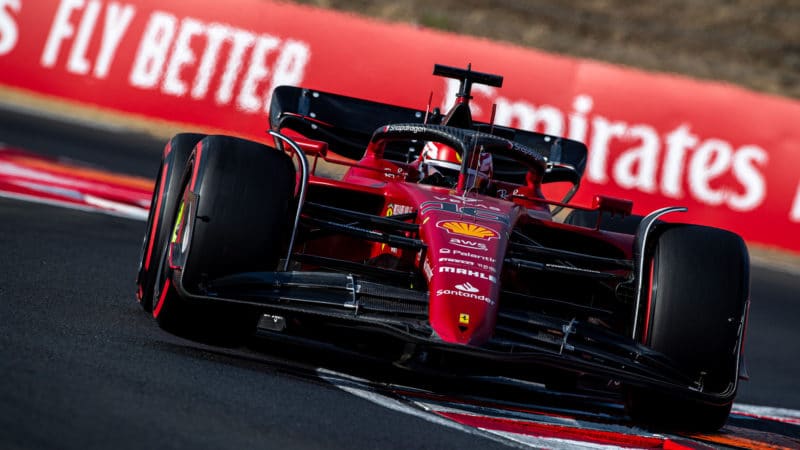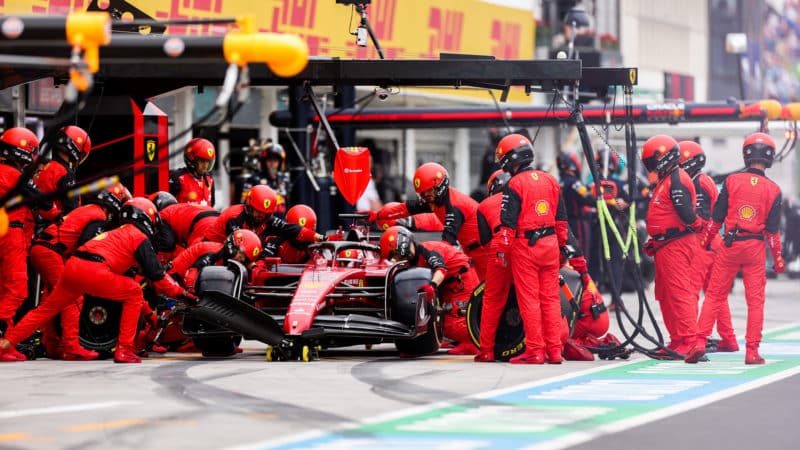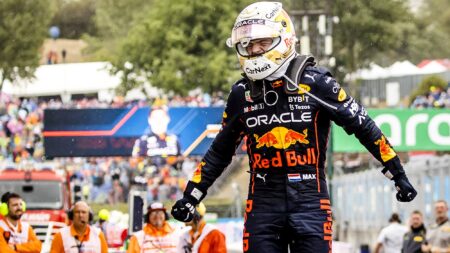Although Russell and the Ferraris – Carlos Sainz ahead of Charles Leclerc – ran away at the front in the first stint, that was only because Lando Norris on his soft tyres had been able to stay ahead of Hamilton at the start. And because Verstappen, taking things very cautiously on the opening few corners, had to find his way around two Alpines before he even got up with Hamilton.
Hamilton went by Norris on the 12th lap as the McLaren’s tyre grip faded and was followed through immediately by Verstappen and Perez. But it had taken most of the first stint for the races of Hamilton and Verstappen to properly begin. By which time Russell, with the closely-following Ferraris, was 11sec up the road.
As Russell’s softs faded and the medium-shod Ferraris closed in, as soon as there was a gap to drop him into – on lap 16 – Russell was brought in for mediums. Eleven seconds back, Red Bull brought Verstappen – whose softs were also just beginning to fade – in to undercut him past Hamilton. Mercedes left Hamilton out there for another three laps – until a Perez undercut threat brought them in.
Ferrari would have left Sainz out there too, except Russell had suffered a 2sec delay at his pit stop, inviting Ferrari to overcut Sainz past by pitting on the next lap. That would have worked if Sainz had not suffered almost as big a delay as Russell at his stop. Ferrari had prioritised Sainz’s track position over the ideal tyre stint spacing – but hadn’t taken the track position! The worst of both worlds. The delay not only ensured he didn’t pass Russell, but that he’d later lose a place to Leclerc. But at least he definitely knew he was now two-stopping, as his mediums had been replaced by another set and there’s a requirement to use at least two compounds.
Leclerc stayed out until the 21st lap and with the extent of everyone’s tyre deg now evident and the obligation to two-stop, he was put onto another set of mediums. Which put Russell back into the lead from Leclerc and Sainz, but Verstappen now fourth and only 7sec behind.
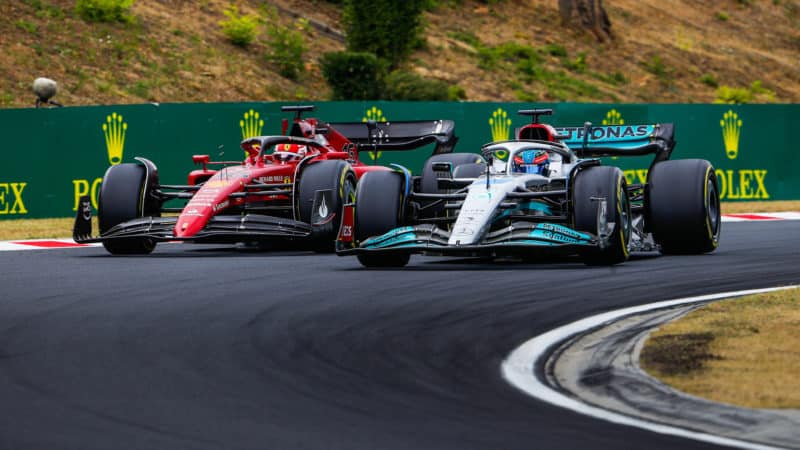
Leclerc would find his way past Russell but it was a false dawn
Antonin Vincent / DPPI
Leclerc, with tyres five laps newer than Russell’s, caught and passed the Mercedes. Behind, as Verstappen closed down on Sainz, he kept that 7sec gap to the lead stable. As soon as he was within undercut range of Sainz – on lap 38 – he was brought in, for fresh mediums on which to get to the end. Sainz stayed out, trying to run long enough to get onto softs. Leclerc and Russell were pitted in response, Russell to maintain track position over Verstappen (which he didn’t do thanks to Verstappen’s stunning out-lap pace), Leclerc to maintain position over Russell.
This was when Leclerc was fitted with the disastrous hard tyres. This in combination with Verstappen’s jumping of Russell brought the Red Bull into serious victory contention. Leclerc had no traction, no grip and no matter how long he ran them, the hards would just not reach their operating temperature. Verstappen was soon all over him. He passed under DRS, before spinning through 360-degrees a few corners later, allowing Leclerc ahead once more. But it took only another four laps before Verstappen repeated his pass. Sainz had managed to stay out leading long enough to get onto the softs for his final stint but not at a pace good enough to remain ahead of Verstappen and Leclerc after he stopped on lap 48. This race was now Verstappen’s.
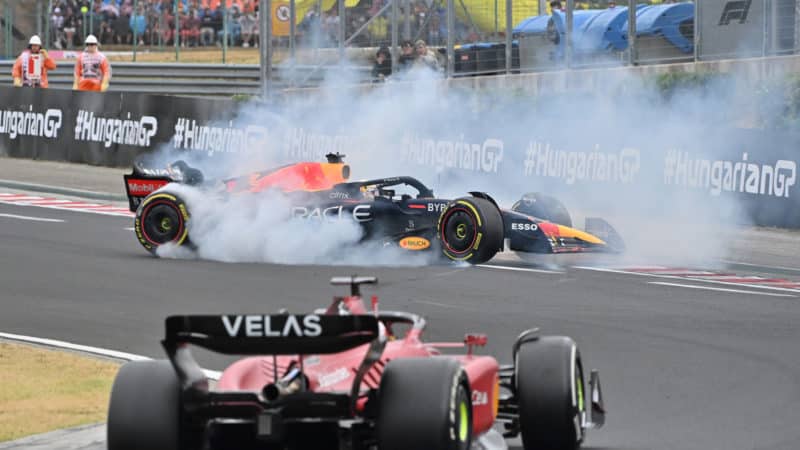
Verstappen spin allowed Leclerc back in front… for four laps
DPPI
Behind him, Russell was catching Leclerc but being caught by Sainz – with Hamilton (like Sainz, on softs for his final stint) – catching them all. Hamilton’s pace on the softs was around 1sec faster than Sainz’s and he set the fastest lap of the race in his chase. Russell passing Leclerc was the trigger for the latter to abandon the hards and pit a third time – putting him sixth, behind Perez. Hamilton passed Sainz and a couple of laps later did the same to team-mate Russell for second.
A long way behind the top three teams, Norris’s McLaren had a fairly lonely run to seventh, well clear of the one-stopping Alpines of Fernando Alonso and Esteban Ocon, with Sebastian Vettel taking the final point in his Aston Martin.

